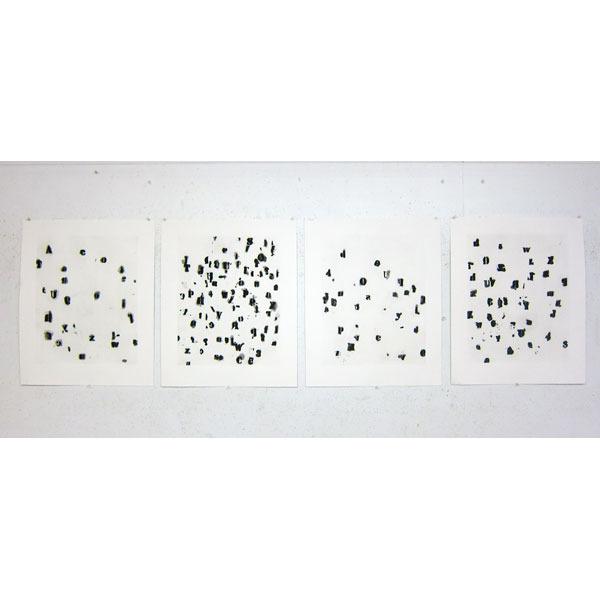Glenn Ligon
View All WorkGlenn Ligon is an American conceptual artist whose work explores race, language, desire, sexuality, and identity. By focusing on literary snippets, jokes, and evocative quotes, his text-based works chose a phrase from the visual arts, history or literature and is repeated over and over, eventually dissipating into murk. His work is greatly informed by his experiences as an African American and as a gay man living in the United States.
Ligon was born in 1960 in the Bronx. At the age of 7, his divorced, working-class parents got a scholarship for him and his brother to attend Waldon School. Ligon graduated from Wesleyan University with a B.A. in 1982. After graduating, he worked as a proof-reader for a law firm, while in his spare time he painted in the abstract Expressionist style of Willem de Kooning and Jackson Pollock. In 1985, he participated in the Whitney Museum of American Art's Independent Study Program. He currently lives and works in New York City. In 1994, the art installation To Disembark was shown at the Hirshhorn Museum and Sculpture Garden in Washington, D.C. The title alludes to the title of a book of poetry by Gwendolyn Brooks. "To Disembark" functions in both works to evoke the recognition that African Americans are still coping with the remnants of slavery and its ongoing manifestation in racism. In one part of the installation, Ligon created a series of packing crates modeled on the one described by ex-slave Henry "Box" Brown in his "Narrative of Henry Box Brown who escaped from Slavery Enclosed in a Box 3 Feet Long and 2 Wide." Each crate played a different sound, such as a heartbeat, a spiritual, or contemporary rap music. Around each box, the artist placed posters in which he characterized himself, in words and period images, as a runaway slave in the style of 19th-century broadsheets circulated to advertise for the return of fugitive slaves. In another part of the exhibition, Ligon stenciled four quotes from a Zora Neale Hurston essay, "how it feels to be colored me," directly on the walls: "I feel most colored when I am thrown against a sharp white background," "I remember the very day that I became colored," "I am not tragically colored," and "I do not always feel colored." Ligon found Hurston's writing illuminating because she explores the idea of race as a concept that is structured by context rather than essence.

